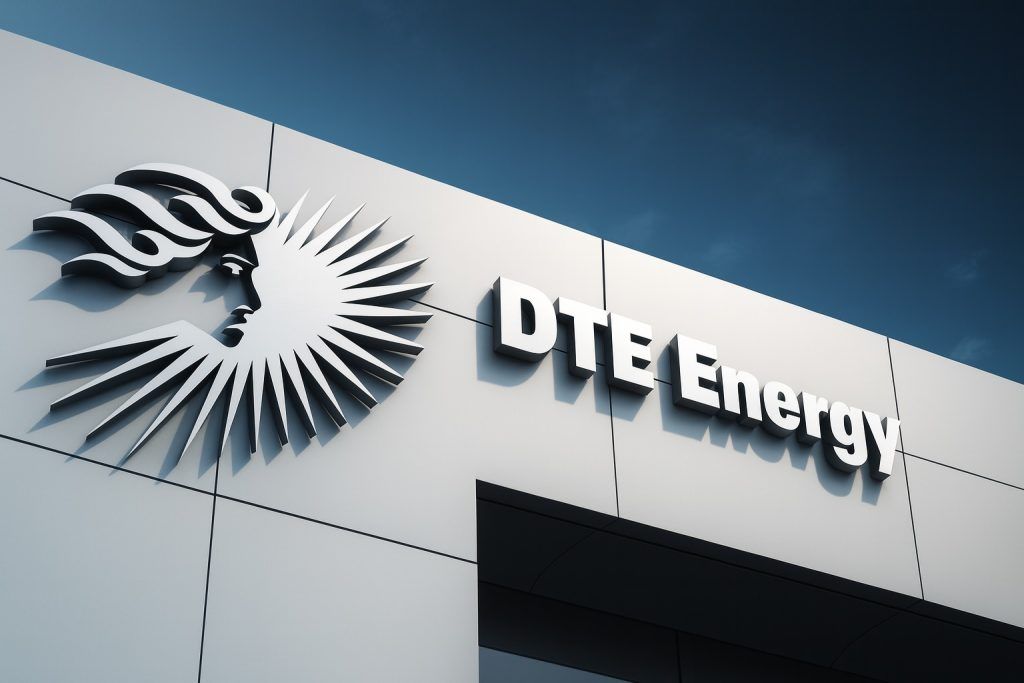- Stock Skyrockets: Femasys Inc. (NASDAQ: FEMY) shares jumped as much as 46% intraday on October 16, 2025, hitting roughly $0.80 (up from a prior close of $0.55) [1]. The stock closed at $0.745 on Oct. 16, up 35% for the day [2], amid heavy trading volume tens of times above average.
- Recent Rally Drivers: The surge was fueled by bullish developments in Femasys’s fertility treatment pipeline and broader sector news. The company announced it will showcase its new FemaSeed® Intratubal Insemination treatment at a major industry conference, coinciding with reports of a potential U.S. policy to expand IVF access – catalysts that have boosted investor interest [3] [4].
- Product & FDA Milestones: Regulatory wins in 2025: Femasys’s novel FemBloc® non-surgical permanent birth control system secured CE Mark approval in Europe (June), MHRA approval in the UK (Aug), and Medsafe approval in New Zealand (Sept) [5] – making it the first in-office, surgery-free sterilization option available in those regions. The company also gained Australian and New Zealand approvals for its FemaSeed® fertility treatment and FemVue® diagnostic tool [6].
- Partnerships and Market Entry: Femasys recorded its first European commercial sale of FemBloc (a ~$400,000 order to a Spanish distributor) after the EU green light [7]. It also inked a distribution partnership with Kebomed to launch FemBloc in France and Benelux, opening key EU markets [8]. In the fertility segment, Femasys partnered with Medical Electronic Systems to roll out a FemSperm™ analysis kit (completing its in-office insemination product suite) [9], and teamed with U.S. clinics like Carolinas Fertility Institute (8 locations) to offer FemaSeed to more patients [10].
- Financial Update: Femasys remains pre-profit but is growing revenue. Q2 2025 sales jumped 85% year-over-year to $0.41 million, and net loss narrowed slightly to $4.59 million (–$0.16 per share), beating expectations of a –$0.18 per-share loss [11]. The company ended Q2 with only $3.2M in cash, but in August it raised $8.0 million in new funding to extend its cash runway and ramp up commercialization [12].
- Analyst Sentiment: Wall Street’s view on FEMY is mixed but tilting positive. Three analysts rate it a “Buy” vs. one “Sell,” giving a Moderate Buy consensus [13]. Price targets range from about $6 to $8 (average ~$7+), implying 500–800% upside from current levels [14]. However, independent ratings firm Weiss recently reiterated a “Sell (E+)” grade [15], reflecting concerns over the company’s financial risks. Analysts note that Femasys’ “next-generation infertility innovation” must be weighed against its high cash burn and market risks [16].
FEMY Stock Soars on Fertility Buzz
Femasys stock has been on a rollercoaster ride in recent sessions. As of October 17, 2025, FEMY traded around the mid-$0.70s per share – more than double its price just a few weeks prior, and well off its 52-week low near $0.31 [17]. On October 16, the stock spiked dramatically: opening near $0.55, it rallied to an intraday high of $0.84 (+52%) before settling at $0.745 (+35%) by the close [18]. This explosive move came amid unusually heavy volume (tens of millions of shares traded, versus ~7 million on a typical day) [19], indicating heightened investor interest.
What drove the sudden surge? The October 16 rally was triggered by a one-two punch of positive news. First, Femasys announced plans to present at the upcoming ASRM 2025 fertility conference (Oct. 25–29) in San Antonio, where it will showcase FemaSeed, its new in-office infertility treatment [20]. “We are excited to return to ASRM to share our next-generation FemaSeed® Intratubal Insemination,” said CEO Kathy Lee-Sepsick, highlighting the company’s enthusiasm for its latest technology [21]. Shortly after this update, national media reports broke that U.S. policymakers may broaden access to IVF (in vitro fertilization) – a development that sent optimism through the fertility sector [22]. Femasys, as a player in fertility treatment, saw its stock shoot up ~46% by mid-day on Oct. 16 amid the buzz [23]. (One market report noted FEMY was up ~30% to $0.72 even before noon as the IVF news hit [24], underscoring the stock’s volatility.)
Even prior to the mid-October jump, FEMY had shown signs of momentum. Earlier in the month, the stock climbed from the mid-$0.30s into the $0.60–0.70 range, with investors bidding up shares on any hint of progress in Femasys’ pipeline. The past two weeks alone saw wild swings – including single-day gains of 52% (on Oct. 3) and 33% (Oct. 6), followed by sharp pullbacks [25] – reflecting the high-risk, high-reward nature of this micro-cap biotech. Despite recent gains, FEMY still trades far below its 52-week high of ~$1.80 [26], a reminder that the stock had been beaten down earlier and is only partway through its comeback.
Fertility Tech Pipeline: New Treatments and Approvals
Femasys has stoked investor excitement thanks to a series of product breakthroughs and regulatory milestones in 2025. The company focuses on women’s reproductive health, with two flagship innovations now moving toward commercialization:
- FemaSeed® Intratubal Insemination: A novel infertility treatment that delivers sperm directly into the fallopian tube to enhance the chance of conception. Clinical data show FemaSeed can achieve over double the pregnancy rate of traditional intrauterine insemination (IUI) [27], while remaining a lower-cost, less invasive first-line option compared to IVF. Femasys is positioning FemaSeed as an early intervention for couples struggling to conceive [28]. After U.S. regulatory clearance, FemaSeed is being introduced in fertility clinics; notably, Femasys partnered with the Carolinas Fertility Institute to offer FemaSeed at 8 clinics across North Carolina [29]. The company also obtained regulatory approval in Australia and New Zealand this year to expand FemaSeed’s global reach [30]. CEO Kathy Lee-Sepsick emphasizes that FemaSeed’s mission is to “transform the fertility journey” for patients by bridging a gap between basic treatments and IVF [31] [32].
- FemBloc® Permanent Birth Control: A first-of-its-kind non-surgical sterilization method. FemBloc involves an in-office procedure that introduces a biopolymer to the fallopian tubes, causing a natural scar and permanent blockage over time – eliminating the need for invasive tubal ligation surgery [33]. This year, Femasys achieved major validation for FemBloc overseas: the device earned a CE Mark in the EU in June, UK MHRA approval in August, and Medsafe approval in New Zealand in September [34]. These endorsements make FemBloc the first in-office, non-surgical permanent birth control available in those regions [35]. With EU approval in hand, Femasys wasted no time securing its first European FemBloc sale – a roughly $400,000 order to partners in Spain mid-year [36]. To accelerate its European launch, the company in late September announced a distribution partnership with Kebomed for France and the Benelux countries (Belgium, Netherlands, Luxembourg) [37], opening some of Europe’s largest markets for FemBloc. Importantly, Femasys is still pursuing FDA approval in the U.S.: a pivotal trial (dubbed “FINALE”) is currently enrolling patients to demonstrate FemBloc’s safety and effectiveness stateside [38]. Success in that trial will be key to unlocking the massive U.S. market for non-surgical sterilization.
In addition to these core products, Femasys has been expanding its supporting fertility toolkit. In September, it launched the FemSperm™ Analysis Kit in partnership with Medical Electronic Systems (a maker of semen analysis tech) [39]. This kit, along with Femasys’s previously introduced FemSperm Prep and Setup kits, gives fertility clinics a full suite of in-office tools to prepare and analyze sperm for use with FemaSeed insemination. By rounding out its product lineup and forging partnerships (both with device distributors and fertility clinic networks), Femasys is laying the groundwork to commercialize its innovations globally.
Crucially, these developments show that Femasys’s technology is gaining validation beyond the lab. Each regulatory approval and partnership not only opens new revenue opportunities but also builds credibility for the company’s approach to fertility and birth control. It’s this growing validation – from European regulators, international clinics, and industry conferences – that underpins the bullish narrative around FEMY stock.
Financial Check-Up: Losses Persist, but Funding Extends Runway
Despite its exciting technology, Femasys remains a clinical-stage company with modest revenues and ongoing losses. Investors are keenly aware of the financial risks that come with this territory, even as they bet on the future. Here’s a look at the latest numbers and what they imply:
- Revenue Growth (but Still Small): In Q2 2025, Femasys reported $409,268 in sales, an 85% jump from the $221,484 a year prior [40]. This revenue was driven by initial commercialization of FemaSeed and FemVue (a diagnostic device for fallopian tube assessment), indicating early market adoption. However, quarterly sales are still under half a million dollars – barely a foothold, given the company’s expenses.
- Earnings and Cash Burn: The company’s net loss for Q2 was $4.59 million (−$0.16 per share) [41], which was slightly better than analysts’ consensus forecast (–$0.18) [42]. Year-ago loss was similar ($4.68M), so Femasys hasn’t yet meaningfully reduced its burn rate. For the first half of 2025, cumulative losses reached over $10 million [43]. As of June 30, cash on hand was just $3.2 million [44] – enough to fund operations only into early Q4 2025 by the company’s own estimates [45]. In other words, without new funding, Femasys was at risk of running out of cash around now.
- New Funding Infusion: To bolster its finances, Femasys completed an equity financing in late August 2025, raising approximately $8.0 million in gross proceeds [46]. This involved issuing new shares/warrants at ~$0.36 per share [47] [48]. The cash injection significantly extends the company’s runway into 2026, albeit at the cost of shareholder dilution. Management stated the funds will be used to “ramp commercialization” of FemaSeed and FemBloc [49] – i.e. scaling up sales efforts, manufacturing, and clinical support for these products. With this money, Femasys can push through upcoming milestones (like the FemBloc U.S. trial and initial marketing in Europe) without an immediate cash crunch.
- Balance Sheet and Ratios: Femasys carries minimal debt (debt-to-equity was only 0.03 as of mid-year) [50], which is a plus. But liquidity is tight: current ratio around 0.9 indicates current assets barely cover liabilities [51] [52]. The company’s accumulated deficit exceeds $130 million [53], reflecting a decade of R&D spend. Until product sales ramp up substantially (or unless Femasys strikes a lucrative partnership), additional capital raises may be needed in the coming years.
In summary, Femasys’s financial health is the primary concern for skeptics. The company is making progress, but it is not yet self-sustaining. Bulls take comfort in the recent revenue growth and the fact that Femasys has managed to secure funding to keep progressing. Bears, on the other hand, point to the small revenue base and ongoing losses as a sign that future dilution or debt could be inevitable if commercial uptake is slow. This dynamic – promising tech vs. cash burn – is central to the stock’s risk/reward profile [54].
Technical Analysis: Volatility High, but Momentum Building
From a trading standpoint, FEMY behaves like the penny stock it is – with large swings and high volatility. Technical indicators reflect a stock that has recently heated up but isn’t in extreme territory yet:
- Momentum Indicators: After the latest run-up, Femasys’s Relative Strength Index (RSI) sits in the low-50s, around 52 [55]. An RSI in this range suggests the stock is neither overbought nor oversold – surprisingly middling, given the price nearly doubled over two weeks. This is partly because FEMY spent much of the past year trending down, so the recent rally is only starting to reverse the longer-term momentum. The stock’s 50-day moving average is around $0.53, now trending upward, but the 200-day average near $0.87 remains above the current price [56]. In short, FEMY has broken above short-term averages, generating some bullish technical signals, but it remains below longer-term trend lines from earlier in the year.
- Volume and Volatility:Trading volume exploded during the mid-October spike – about 72 million shares changed hands on Oct. 16 (versus ~1.4M the prior day) [57]. Such a volume surge accompanying a price jump is typically seen as a positive confirmation of the move’s strength, indicating new buyers rushing in rather than just a thinly traded spike. Volatility, however, is off the charts: FEMY’s price swung 51% intraday on Oct. 16 alone [58]. Over the past week, daily swings of 20–30% were common. This extreme volatility earns FEMY a “very high risk” label from analysts [59] – traders should be prepared for rapid moves in either direction.
- Support & Resistance: Chart-wise, FEMY may have established support around the mid-$0.60s. There is a band of trading volume in the $0.63–$0.65 range from earlier this month that could serve as a floor if the stock pulls back [60]. Below that, additional support might sit around $0.59–$0.60 (the levels where it traded prior to the latest news) [61]. On the upside, the stock faces immediate resistance around ~$0.78–$0.80, which was the intraday peak on Oct. 16 and also roughly where a short-term falling trendline lies [62]. Notably, FEMY failed to close above $0.78 on that spike. A convincing break above $0.78 could signal a trend shift to the upside [63], potentially paving the way to challenge higher levels. Until then, some technicians warn the stock could drift lower or consolidate as traders take profits from the huge recent run-up [64]. In practical terms, this means new investors might wait for dips near support, while momentum traders will watch for a breakout through resistance.
Overall, the technical picture shows short-term bullish signals mixed with longer-term caution. The stock has momentum and interest behind it now, but it’s still in a fragile spot – any negative surprise or broader market weakness could send shares reeling due to the thin margin of safety (hence the tight stop-loss recommendations around ~$0.70 for active traders [65] [66]). Long-term investors in FEMY will likely need a strong stomach for volatility.
What Are Analysts and Experts Saying?
Professional analysts covering Femasys are trying to handicap a very uncertain outcome – a tiny biotech with potentially huge upside, but substantial risk. Not surprisingly, their opinions span a wide range:
On the bullish end, HC Wainwright and a few other boutique investment banks have Buy ratings on FEMY, citing the company’s unique position in an underserved women’s health niche. As of last week, 3 out of 4 analysts tracked by MarketBeat rated Femasys a Buy, versus 1 Sell [67]. The average 12-month price target among these analysts is about $7.33 per share [68], which implies nearly 900% upside from the current ~$0.75 price. One research firm even had a target as high as $8.00 (though it was recently trimmed down from $12) [69]. These lofty targets reflect expectations that if Femasys’s products achieve commercial success – especially in the U.S. – the tiny current market cap (around $25–30 million) could increase dramatically to better reflect the revenue potential. “StockAnalysis.com” currently shows a consensus “Strong Buy” rating and emphasizes this outsized upside, pointing to Femasys as a high-growth microcap opportunity [70].
However, not everyone on Wall Street is convinced. Notably, in early October Weiss Ratings (an independent research service) reiterated its “Sell (E+)” grade for FEMY [71], essentially rating the stock near the bottom of its scale. This bearish stance highlights the company’s negative margins and financial instability. Some observers also question the timeline and adoption of Femasys’s products: even with approvals, will FemBloc and FemaSeed gain traction quickly enough to justify the hype? An analyst summary on one newswire put the dilemma succinctly: investors are weighing Femasys’s “next-generation infertility innovation” against its cash burn and market risks [72]. In other words, the promise of revolutionary fertility solutions must be balanced against the reality that Femasys is still a cash-consuming venture in a competitive medical field.
There is also a sense that execution is key at this stage. “Femasys has cleared some impressive hurdles – now they need to deliver,” says one market commentator, pointing to the upcoming U.S. FemBloc trial results and the rollout of FemaSeed in clinics. Any signs of real-world efficacy (e.g. higher pregnancy success rates in FemaSeed users) or revenue traction could convert more skeptics into believers. Conversely, delays, regulatory setbacks, or financing troubles could validate the bears’ concerns. It’s worth noting that the next earnings report (Q3 2025) is scheduled for November 11, 2025 [73], and management’s commentary then will likely shape near-term sentiment. Analysts will be listening for updates on European FemBloc sales, U.S. trial enrollment progress, and how far the recent $8M funding will carry the company.
For now, the consensus lean is cautiously optimistic – FEMY is seen as a speculative “Moderate Buy” with multibagger potential, but it is not a stock for the faint of heart [74]. As HC Wainwright’s analyst put it (in maintaining a Buy rating while cutting the price target), the technology is compelling, yet one must “be mindful of dilution risk and slow ramp-up” in the near term. This encapsulates the expert view: high reward, high risk. Investors intrigued by Femasys are essentially betting that the company’s fertility innovations will carve out a profitable niche, and that by the time it needs more cash, the stock price will be higher – allowing any future financing to be done from a position of strength.
Outlook: Promise and Peril in Equal Measure
Looking ahead, Femasys faces pivotal moments that will determine whether its stock’s recent fireworks are the start of a sustained uptrend or just a flash in the pan. There are several key catalysts on the horizon:
- ASRM Conference (Late Oct 2025): In the immediate term, all eyes are on Femasys’s presence at the American Society for Reproductive Medicine (ASRM) meeting on October 25–29. This is a prime opportunity for the company to demonstrate FemaSeed® to leading fertility specialists and perhaps announce new data or partnerships. Positive buzz or media coverage out of ASRM could keep the stock momentum going. Conversely, if nothing new emerges, traders who bought the rumor might “sell the news.”
- FemBloc “FINALE” Trial Progress: The pivotal U.S. trial for FemBloc is an essential milestone. Enrollment is underway [75]; investors will be eager for any interim updates or timeline on completion. If Femasys can hit its enrollment targets and show solid results (likely in 2026), it would pave the way to seek FDA approval for FemBloc – potentially a game-changer moment for the company. Successful trial results could validate FemBloc’s value and perhaps attract a larger partner or acquirer, given the huge market for non-surgical birth control. On the flip side, any hiccups in the trial (slow enrollment, safety issues, etc.) would be a serious blow to the bull thesis.
- Commercial Uptake and Revenue Growth: Now that FemBloc and FemaSeed are approved in various markets, the focus shifts to execution: How many doctors will actually adopt these solutions? Will patients opt for FemaSeed as an IUI alternative? Can FemBloc start generating meaningful sales in Europe? Femasys’s upcoming Q3 and Q4 2025 results will give early clues – even if revenues are small, a clear upward trend or new distribution deals could signal that the company’s strategy is gaining traction. The recent partnerships (like Kebomed in Europe, and clinic networks in the US) are encouraging, but investors will look for evidence of follow-through (orders, procedure volumes, etc.). If by next year Femasys can show a few million in annual revenue and growing, it would bolster confidence that the business model works. Until then, revenue will be closely watched to justify the company’s valuation.
- Funding Needs: Thanks to August’s capital raise, Femasys is funded into at least mid-2026 by estimates [76], but it’s likely not the last time the company will need to tap investors for cash. A critical part of the outlook is whether Femasys can improve its stock price and financial position before the next financing. If the stock remains relatively low and the company has to raise money again in a year, dilution could be steep (which current shareholders dread). However, if Femasys’s progress drives the share price higher (say into the dollars), future fundraising would be less painful. This creates a bit of a race against time dynamic: the company must strive to hit value-creating milestones on its current cash in order to uplift its share price for whatever comes next.
In the bigger picture, Femasys is operating in a space – fertility and women’s health – that is often considered ripe for innovation and investment. The potential markets are significant: infertility affects millions of couples, and existing options (like IVF) are expensive and invasive; similarly, permanent contraception has not seen a true innovation in decades (relying mainly on surgical tubal ligation). Femasys’s products aim to fill these gaps with less costly, office-based solutions. If the company succeeds, it could tap into a multi-billion dollar global opportunity, which makes the current sub-$1 stock price look like a bargain. That is the bull case in a nutshell.
The bear case, of course, is that good ideas don’t always translate to commercial success. Femasys must educate doctors and patients, navigate regulatory approvals country by country, and fend off any competitors or new technologies that emerge (for instance, startups working on non-surgical sterilization could appear). Moreover, small-cap biotech stocks are at the mercy of broader market sentiment; any downturn in the biotech sector or pullback in risk appetite can hit names like FEMY disproportionately hard, regardless of company-specific progress.
Bottom Line: Femasys Inc. now stands at a crossroads of opportunity and risk. The recent stock surge shows that investors are paying attention to its story of “next-gen” fertility and birth control solutions. In the coming months, delivering on that story will be crucial. Positive news – whether it’s a successful conference demo, strong trial data, or rising sales – could further ignite FEMY’s climb. However, caution is warranted given the company’s early-stage financials and the volatility of its stock. Prospective investors should carefully consider whether Femasys represents a fertile ground for growth or a speculative bet in the competitive biotech landscape. In either case, FEMY will be a ticker to watch as the biotech works to turn its innovative science into shareholder value.
Sources: Key information and quotes in this article were drawn from Femasys’s official press releases and SEC filings, expert analysis on tech investment sites, and real-time market data. Notable references include a TS2.tech report on Femasys’s stock jump and business updates [77] [78], GlobeNewswire announcements of product approvals and clinical trial progress [79] [80], financial data from company filings [81], and commentary from market research outlets like MarketBeat and GuruFocus on analyst ratings and technical signals [82] [83]. This broad range of sources underscores the comprehensive view taken in evaluating Femasys Inc.’s current situation and prospects.
References
1. ts2.tech, 2. finance.yahoo.com, 3. ts2.tech, 4. ts2.tech, 5. ts2.tech, 6. ts2.tech, 7. ts2.tech, 8. ts2.tech, 9. ts2.tech, 10. ts2.tech, 11. ts2.tech, 12. ts2.tech, 13. www.defenseworld.net, 14. ts2.tech, 15. ts2.tech, 16. ts2.tech, 17. ts2.tech, 18. finance.yahoo.com, 19. stockinvest.us, 20. ts2.tech, 21. ts2.tech, 22. ts2.tech, 23. ts2.tech, 24. ts2.tech, 25. markets.financialcontent.com, 26. www.defenseworld.net, 27. ts2.tech, 28. ts2.tech, 29. ts2.tech, 30. ts2.tech, 31. ir.femasys.com, 32. www.nasdaq.com, 33. ts2.tech, 34. ts2.tech, 35. ts2.tech, 36. ts2.tech, 37. ts2.tech, 38. ts2.tech, 39. ts2.tech, 40. ts2.tech, 41. ts2.tech, 42. ts2.tech, 43. ir.femasys.com, 44. ts2.tech, 45. ir.femasys.com, 46. ts2.tech, 47. ir.femasys.com, 48. ir.femasys.com, 49. ts2.tech, 50. www.defenseworld.net, 51. www.gurufocus.com, 52. www.gurufocus.com, 53. www.nasdaq.com, 54. ts2.tech, 55. www.gurufocus.com, 56. www.defenseworld.net, 57. stockinvest.us, 58. stockinvest.us, 59. stockinvest.us, 60. stockinvest.us, 61. stockinvest.us, 62. stockinvest.us, 63. stockinvest.us, 64. stockinvest.us, 65. stockinvest.us, 66. stockinvest.us, 67. www.defenseworld.net, 68. www.defenseworld.net, 69. www.defenseworld.net, 70. ts2.tech, 71. ts2.tech, 72. ts2.tech, 73. www.benzinga.com, 74. www.defenseworld.net, 75. ts2.tech, 76. ir.femasys.com, 77. ts2.tech, 78. ts2.tech, 79. ts2.tech, 80. ts2.tech, 81. ts2.tech, 82. www.defenseworld.net, 83. www.gurufocus.com







